AMS Albums of the Year
The best of alternative music, from AMS
Alt-J: An Awesome Wave

OK, I’m hardly thinking outside the box here. ∆ (or Alt-J to those of you who aren’t massive pricks) have already won the Mercury Prize for An Awesome Wave and the album’s seen massive critical acclaim from all over. As such, it seems a bit of a cop out for me to call it my ‘album of the year’. It’s certainly losing me valuable hipster points, but I seriously can’t think of anything I’ve enjoyed more this year. 2012 has not been a great year for innovation, and as such, this is the closest I’ve got to getting excited about anything.
That all sounds a bit harsh, and I suppose I’m being a bit unfair. This is a really good album. It’s “arty” indie pop at its best. It’s complex but it’s not painfully so. It’s catchy and intricate. It’s like Two Door Cinema Club and Wild Beasts had a baby and then gave it a really stupid name. ‘Tesselate’, ‘Breezeblocks’, ‘Dissolve Me’ and ‘Fitzpleasure’ alright. I’d get rid of the secret track, but that’s because secret tracks are stupid and should all be permanently removed from existence. An Awesome Wave is not mindblowing. It won’t change your life. It’s just the best new album I’ve listened to this year, and isn’t that just a little sad.
Stuart Masson
Purity Ring: Shrines
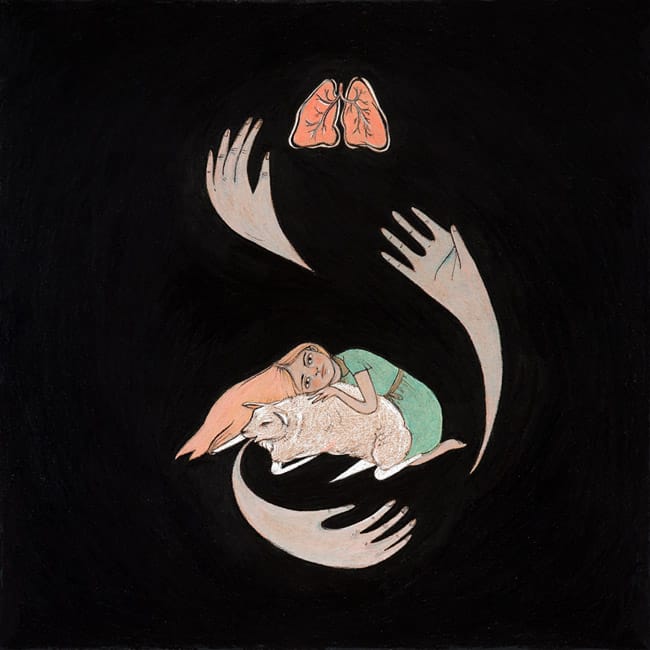
This decade brought internet “microgenres” of songs shared by friends on tumblr, covered in gaudy aesthetics as important as the sound itself, never meant for public consumption. Some were picked up by critics, given names that the artists rejected, gained some legitimacy. Witch-house, with its cult imagery and haunted, pitch-shifted vocals was the most prominent of these, coming into the public eye over 2011.
Doomed to fail almost as soon as it arose, most artists had unsearchable names made of cross, dagger and triangle symbols, releasing a single EP then disappearing into obscurity. The buzz died, an aborted aesthetic experiment which became a ghost like the sheets of so many witch-house album covers.
Of the few notable acts to rise from the scene, it’s perhaps telling that the one furthest removed from the genre, Purity Ring, became the most successful. Releasing a few choice singles over the course of a year, they showcased witch-house production without the pretension: a typical male/female synth-pop duoin the vein of The Knife or Crystal Castles, but with throbbing bass synth swells, muted 808 kicks and eerie distorted backing vocals.
They brought this into a coherent work with their release of their debut, Shrines, in July: a continuation of their already-trademark sound, with the tracks all just variant enough, and the album just short enough, to keep things from getting boring.
The lyrics play on the sound - a jarring mix of romance and sheer body horror, from “cut open my sternum and pull / my little ribs around you” or “drill little holes into my eyelids / that I might see you when I sleep” all trilled in a poppy, almost cutsey voice. It’s here that the witch-house image is most apparent,but the lead vocals cut above the mix with surprising clarity - Shrines is pop, of a sort, and signals the end of a dying subgenre while rising from its ashes.
Keir Little
Portico Quartet: Portico Quartet
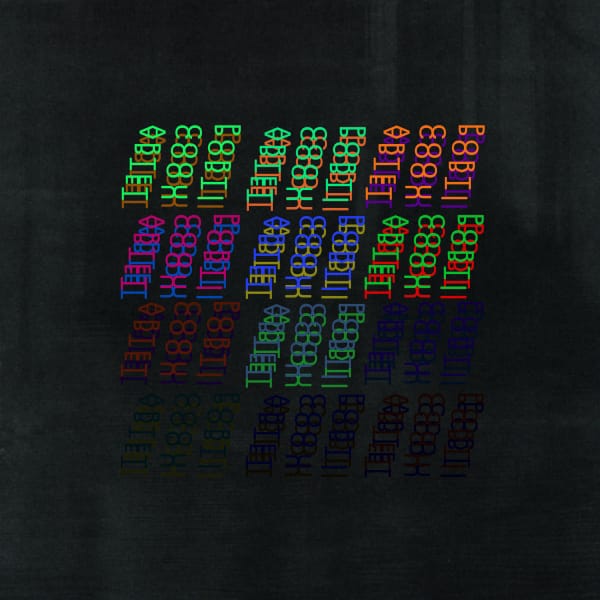
When many genres are thrown against one another, getting the right balance such that the beast will actually get off the ground is difficult enough, but to create an entirely new space, where each constituent idea is represented in just the right amount, verges on accidental – or magical.
Portico Quartet manage exactly this with a humble palette of instruments. On their debut album released in 2007, they played straight forward, cheerful jazz as a four piece (saxophone, double bass, drums and hang). Two albums later, their self-titled album released this January has its sound completely changed by adding synthesisers, electronic percussion, violin, and an assortment of loops and drones. The basic ideas of jazz are re-appropriated for creating dark instrumentals with progressive structures, experimental soundscapes starring Art Blakey style drum solos, and sparse ambient interludes constructing soft delicate moods.
The first single, ‘Ruins’, opens onto a double bass lead and simple electronic groove. What sets the tone is the hang, providing an ominous, bassy swell as the beat becomes more complex. The energy of the band rides up and down led byemotive saxophone lines, which, whilst jazzy in style, feel accurate and meaningful. The background ambience never gets busy enough to lose the interplay between band members, which is what has made their past work so successful. ‘Steepless’ is another individual track worth mentioning, featuring Cornelia Dahlgren, a Swedish singer, who adds delicate vocals to a sparse, glitchy ballad.
Electronic music meeting jazz isn’t exactly new. Portico Quartet, however, have managed to craft an album with the mood of Kid A whilst keeping core ideas from jazz intact. The overall result is an album that should entertain those up for a smooth, intelligent ride, or to just take them somewhere they feel they’ve never really been before.
Robin Thomas
Lower Dens: Nootropics
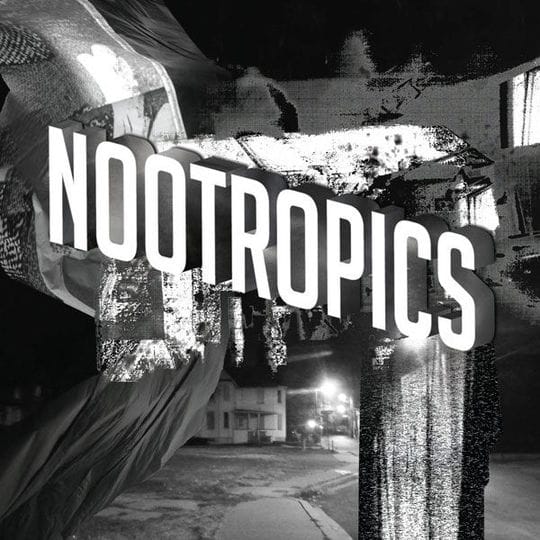
It seems to me that very few people seem to be talking about Lower Dens at all. Surprising considering they toured with Beach House and Deerhunter following the release of their debut Twin Hand Movement, and that the follow-up Nootropics can sit securely as my album of the year.
Named for a hypothetical type of mind-enhancing drug without side-effects, Nootropics is a record concerned with humanity and it’s future. But, if the subject matter sounds oppressive, the album is in fact incredibly immersive, enveloping you in folds of guitar and letting you get lost in its soundscapes. Resting somewhere between shoegaze, dream-pop and art-rock, each track is an exercise in precision, built around carefully layered melodies, drum-lines and keys. At times, such as on ‘Propagation’ or closing track ‘In The End Is The Beginning’, it sounds vast and cavernous, with Hunter’s voice seemingly echoing into infinity. At other points, the sound is close and taut; tracks ‘Brains’ and ‘Stem’ are wrapped tightly around the rattle of the drums.
As I mentioned, Nootropics has a theme, of progress and uncertainty. But it’s not forced upon you through blunt lyrics or sermonising. Rather, it seems to be conveyed by every aspect of the music. Elegant and involving, Nootropics is a phenomenal record.
Padraic Calpin
Killer Mike: R.A.P Music
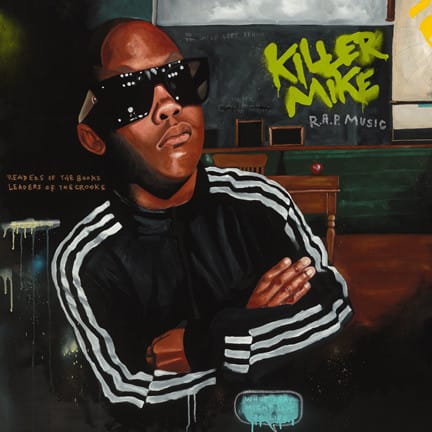
“Hardcore G shit, homie, I don’t play around” are the words that mark the beginning of R.A.P. Music and there isn’t a momentin the next 45 minutes that don’t live up to this intensity. The greatest strength of this album is this energy that runs through it. The record was created almost entirely by Mike and producer El-P, with only a few guest appearances, and this is exactly how it feels. It oozes this passion of two guys making music they love for people who love music, a huge love letter to the last three decades of hip hop, while simultaneously providing the genre with another great, forward looking album. Music that celebrates the past like this would usually run dangerously close to being cheesy but it’s howgenuine Mike is that makes this work. “I’ve never really had a religious experience, in a religious place / Closest I’ve ever come to seeing or feeling God is listening to rap music” claims Mike on the title track. And when records are being made like this, it’s not hard to see why. A record with such vitality is well worth a listen if you have the even the slightest interest in hip hop.
Adam Ravenscroft
Grimes: Visions
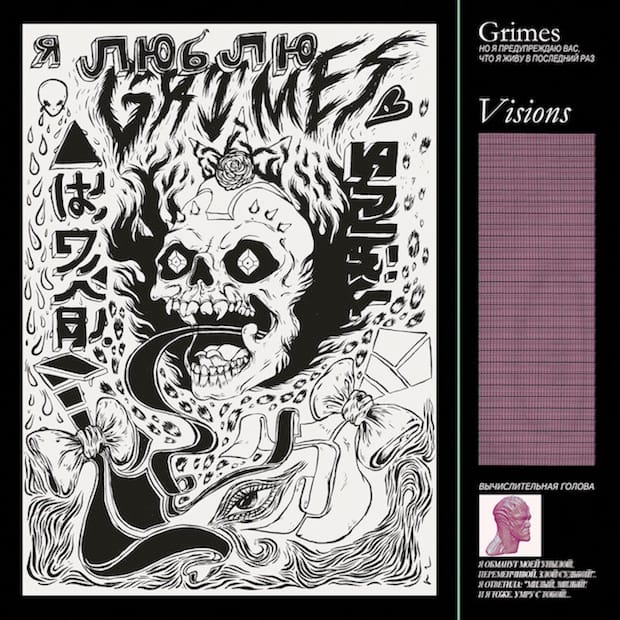
When talking about Claire Boucher, a.k.a. Grimes, it is difficult to make her not seem like some kind of hipster parody createdby VICE magazine; a 24 year-old Canadian native who sports a variety of hair colours, released her first album Geidi Primes on cassette tape, and went without food or sleep for three weeks while creating her latest album Visions – a beguiling mix of dreamy synth-pop mixed with infectious beats and an incredibly high vocal range. So far, so kooky.
However, if you look past the ever so slightly hipper-than-thou image Grimes projects, you’ll find that Visions is an absolutely incredible album, nd completely deserves the top spot this year. Using a huge range of samples alongside layered and looping vocals, Grimes creates songs which manage to be both complex, and somehow also sparse. Standout tracks include ‘Genesis’, an incredibly catchy tune in which airy vocals float above a bouncy backing track, and ‘Skin’, in which Boucher’s shrill, somewhat unnerving voice delivers intimate, confessional lyrics such as “You touch me once again and somehow it stings/because I know it is the end”. Beautiful stuff. The video for ‘Oblivion’, another quality track which conjures up a hazy, dream-like atmosphere, manages to perfectly encapsulate the essence of Visions; Grimes sings in the audience of a packed stadium, moshes with a group of frat boys, and dances outside with skater kids. The pastel-hued video is wonderfully eccentric, and Grimes comes across as a completely joyful oddball –watch it and see for yourself.
One of the many unique facets of Grimes’ personality is how much control she has over her artistic vision. In a recent interview with Dazed and Confused she described herself not as a musician, but as a “curator of stuff”, something which comes across in her work; as well as providing vocals for the tracks, she produced the entire album, directed the music videos, and designed all the cover art. The last year has been unbelievable for Grimes, whose ascent from obscurity to hipster stardom doesn’t seem to show any signs of slowing down; I look forward to what she does next with bated breath, and so should you.
Fred Fyles







